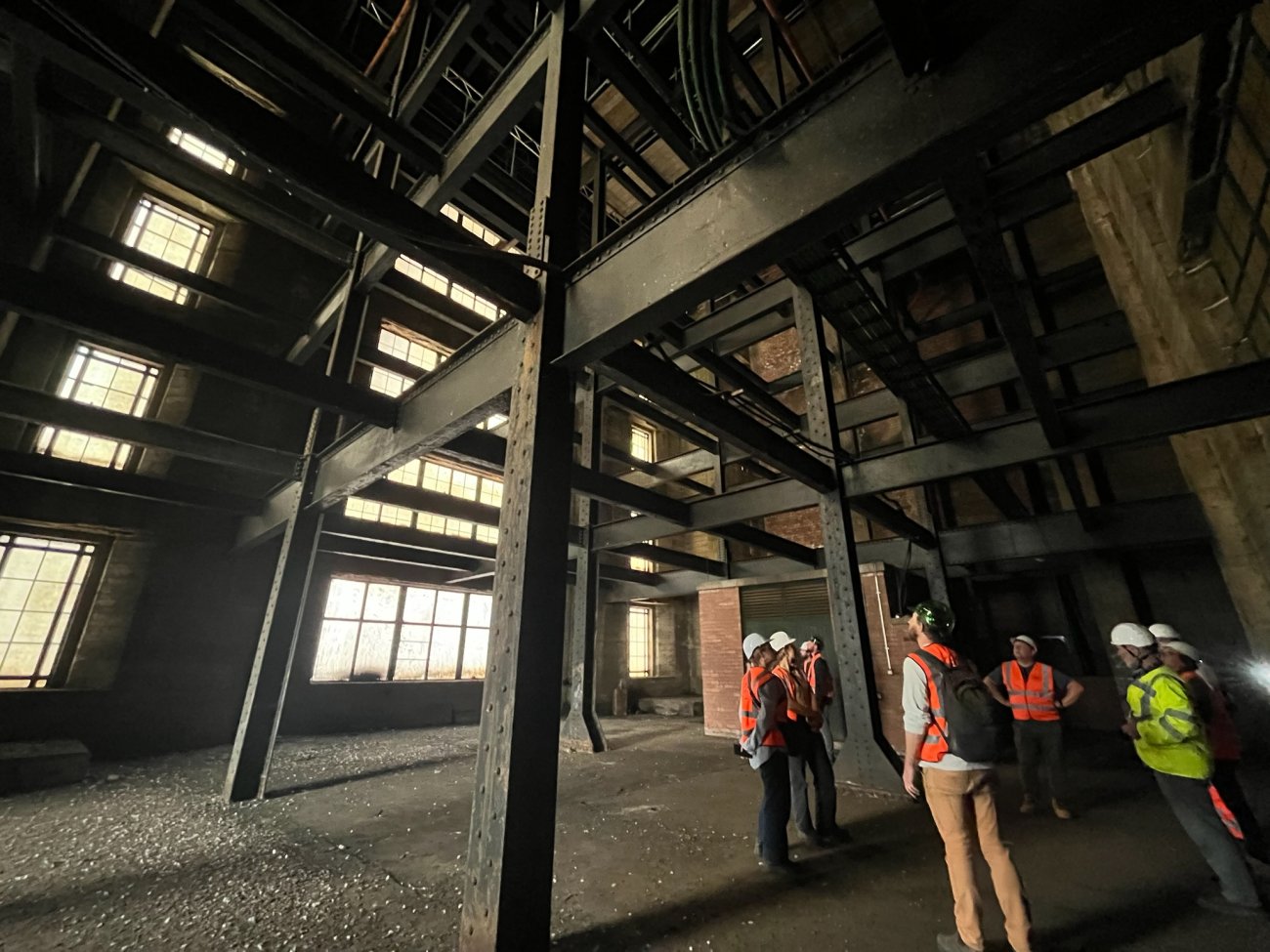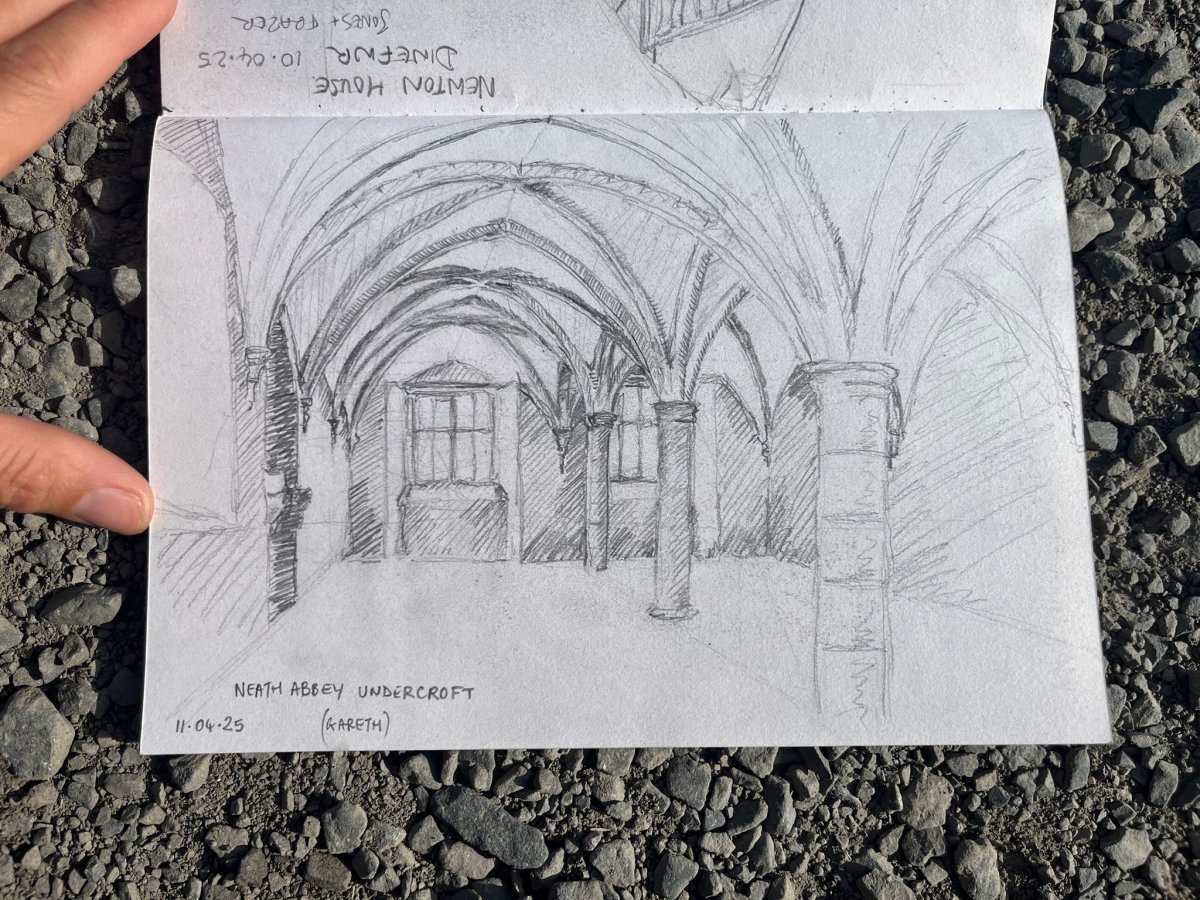Archaeologist and heritage carpenter Viv Walker unpacks some of the insights she's gained during the SPAB Fellowship. Interested in the 2026 SPAB Fellowship? Learn about applying.
So far this year on the SPAB Fellowship, we’ve driven what feels like the entire length of the country several times over, wild swam in every cold body of water we could find, clocked many late-night hours chatting conservation, and probably said the word ‘lime’ over 5,000 times and counting. It’s hard to pick out a best visit while still in the midst of the experience, but it has been a remarkable privilege having access to some of the country’s most famous and important historical buildings, and meeting some of the best and most interesting craftspeople Britain and Ireland has to offer. I’ve found it especially interesting seeing the massive variety in vernacular buildings throughout the country, particularly the shift in style and frequency of timber framed buildings from the north to the south of England.

SPAB Scholars and Fellows in one of the abutment towers of the Tyne Bridge (Newcastle), with Leon Walsh (Historic England) © Viv Walker
Before the Fellowship, I spent many years working in both archaeological excavation and craft, and so when I started last April I found that these experiences shaped the way I understood historic material and its conservation. This is particularly relevant to how I read a building, establish a chronology and identify historical significance. I found that my archaeology training has instilled in me the importance of making connections between reading the materiality of a building and the interpretation of its social value, either to us or to past societies. My first thought is always to identify the chronology, which ranges from dating the original structure to later interventions/repairs and any non-physical social significance.
This background, alongside my experiences during the Fellowship have shown that in order to either survey or practically repair an old building it’s equally important to have a thorough understanding of craft processes and skills. In any building, there are so many materials interacting that it’s important to have a holistic understanding of craft, which is an education that is certainly provided during the Fellowship as we’ve visited a wide range of craftspeople, not just our own specialism.
In below-ground archaeology, its usual to only be left with small fragments which indicate a building, eg wall foundations, postholes etc., and most importantly the use of the building is long-since over. Ultimately, the archaeology is either removed from its original context and placed in a museum or actively dismantled for recording. This contrasts with existing historic structures which are still being used, either for their original purpose or with a new function, and the ever-debatable balance between preservation of historic fabric vs functionality. Old buildings aren’t usually removed from their contexts, its the context that changes around them. In below-ground archaeology, the remains and objects may evocatively indicate how historical societies might have lived; but standing, living buildings remain the theatres in which social history is played out.

At the beginning of the year, I was struck by the significance of the continuous use of historical spaces and how every intervention invariably describes the society that carried it out, whether it’s the medieval rebuilding of a church, Victorian cement pointing or a 21st-century honest and readable repair. I found that for me, the striking thing about ancient buildings isn’t the grandeur of a cathedral nave (although we have seen some wonderful examples), it’s the small hidden details that reveal a human hand in construction. This might be tool marks on a surface that wasn’t meant to be seen, carpenters marks on a timber frame or small human mistakes in the symmetry of a carving.
Currently, we are nearing the end of our second block of visits with only two weeks to go during which we travel from the Isle of Mull, to Glasgow then over to Ireland. We’ll be returning in October for the third block where we will be able to specialise and go on selected placements. Most of the experiences and conversations we’ve had haven’t sunk in yet but I find I am beginning to reflect on the journey thus far and how my perspectives on heritage conservation and craft have shifted.
Want to do what Viv has done?
Learn more about the SPAB Fellowship or the partner programme, the SPAB Scholarship.
Viv Walker has a background in Fine Art and an Msc in Experimental Archaeology. Viv Walker Website | Viv Walker Instagram
Header Image: SPAB Scholars and Fellows in one of the abutment towers of the Tyne Bridge (Newcastle), with Leon Walsh (Historic England) © Viv Walker

